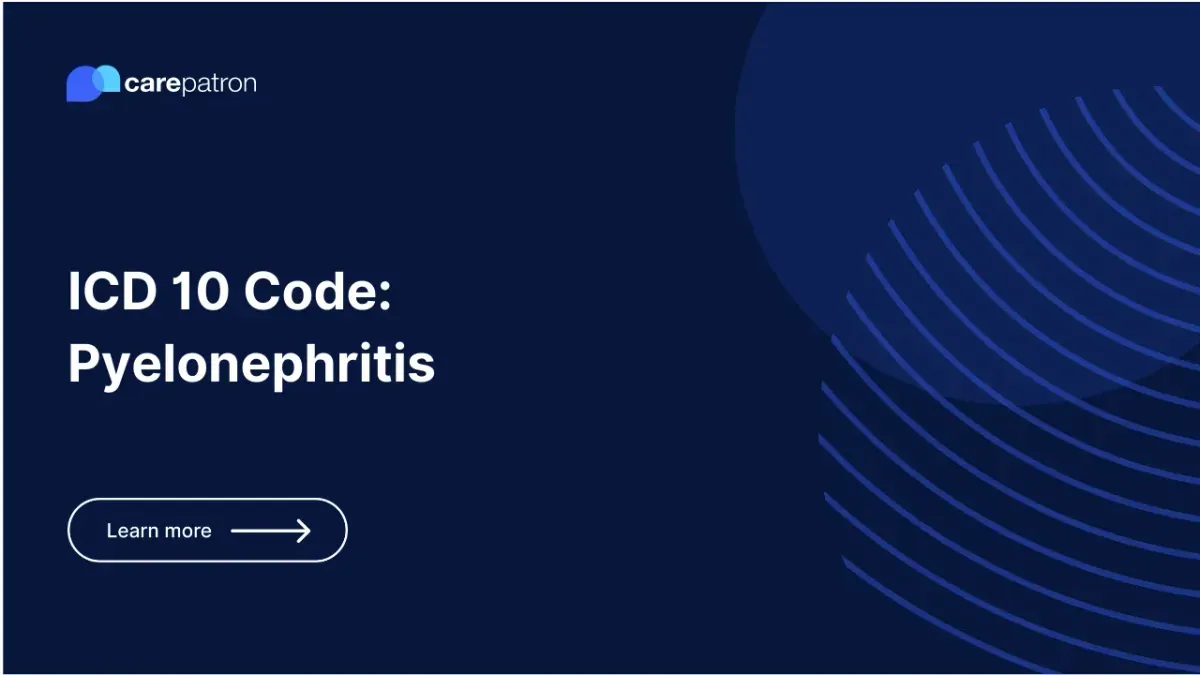
Pyelonephritis ICD-10-CM Codes
Explore 2025 ICD-10-CM codes for acute, chronic, and obstructive pyelonephritis, including diagnosis, symptoms, treatment, and clinical coding guidance.
Use Code
Commonly asked questions
Pyelonephritis is a type of kidney infection that typically results from bacteria spreading from the urinary tract to the renal pelvis and kidney tissue. It can be acute or chronic and may lead to serious complications if left untreated.
Common symptoms include fever, chills, flank or lower back pain, nausea, and frequent or painful urination. In more severe cases, patients may experience cloudy or foul-smelling urine, as well as signs of systemic infection.
Treatment usually involves antibiotics to eliminate the bacterial infection, with hospitalization required in severe cases. Management may also include pain control and addressing any underlying conditions, like urinary obstruction or reflux.
EHR and practice management software
Get started for free
*No credit card required
Free
$0/usd
Unlimited clients
Telehealth
1GB of storage
Client portal text
Automated billing and online payments
